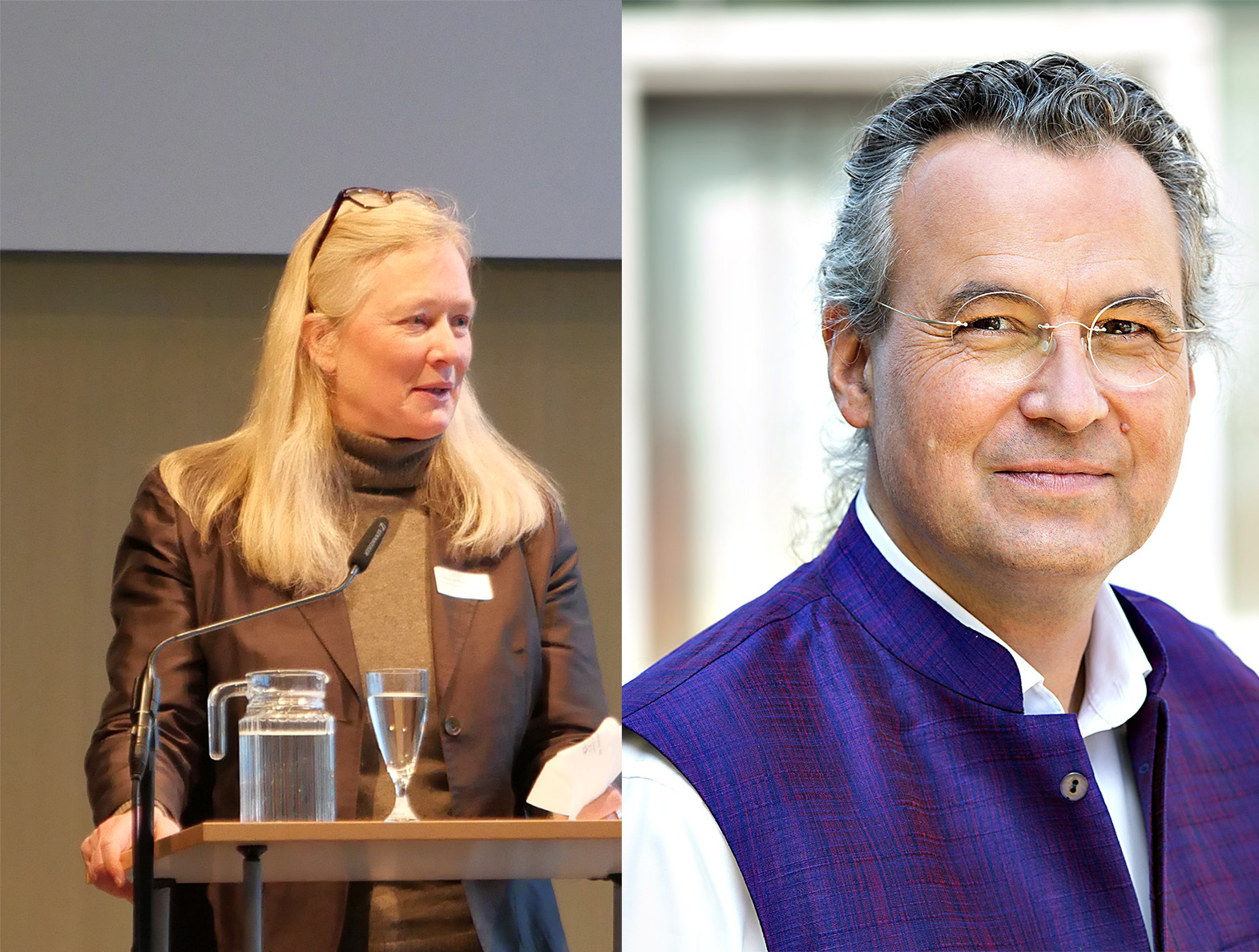You have been president of the Berlin Chamber of Architects since 2021 and president of the Brandenburg Chamber of Architects since 2022, respectively. What goals have you set yourselves personally and what role does cooperation between Berlin and Brandenburg play in achieving them?
Theresa Keilhacker (TK): Working with my highly skilled colleagues, I want to drive forward planning and construction that takes into account climate, resources, soil protection and public participation. The basis for this is the three-pillar model of sustainability: We take a holistic and balanced approach to the environment, the economy and society. We think in terms of cycles, and have set ourselves the goal of using resilient strategies that are strong in terms of building culture in order to advance the transition in the building sector and the fields of urban planning, architecture, interior design and landscape architecture. Renovation and the development of existing structures take precedence over new construction. Using the Berlin-Brandenburg IBA (international architecture exhibition) as a catalyst, we want to make the capital region an experimental space for these ideas and initiate the paradigm shift in living laboratories.
Andreas Rieger (AR): From my many years of political and professional work, I see public participation in the building and housing sector as the central building block for climate-friendly and sustainable planning and construction. We have developed this building block as a standalone contribution to the adopted Brandenburg Climate Plan. From the point of view of both chambers of architects, it is clear that planning and building in the capital region Berlin-Brandenburg must be developed jointly by both states. With this in mind, in order to implement the joint state development plan across the different municipalities, we are proposing an event on building culture that is a reworking of a well-known concept: an international building (culture) exhibition.
The construction sector is one of the largest emitters of CO2, accounting for around 38% of global emissions. What climate change adaptation measures can be implemented in the building sector in the medium and long term in our region?
TK: The building sector needs to be based on the circular economy, and there is still a long way to go. But the Berlin-Brandenburg capital region offers lots of potential for getting this right – with cooperatives and many engaged individuals. Along the regional value chain and through an exhibition on building culture, we need to create an experimental space that promotes innovation, inspires new ideas, and establishes a smart and sustainable long-term framework for the investments announced by policymakers.
AR: And there’s more: The construction and housing sector is the main driver of the environmental and climate crisis and the primary cause of emissions due to the extraction, processing, transport and installation of building materials and components, the operation and maintenance of the buildings and structures made from them, as well as their demolition and disposal (see Schellnhuber/Sobek, Konvent der Baukultur – Building Culture Convention).
The Brandenburg Chamber of Architects is calling for appropriate planning procedures and a legal and economic framework for climate-friendly planning and building. Municipalities and municipal housing associations, as well as private developers, need to be motivated and qualified to implement climate-friendly and resource-efficient planning and construction processes in their day-to-day work. The building codes and technical building regulations introduced should be put to the test. The German states need to lead the way here in their own construction efforts.
As members of the new Expert Council of the Climate Change Center Berlin Brandenburg, you each represent a German state. What do you expect and want to see from the council regarding cooperation in the metropolitan region?
TK: We are getting ever closer to the planetary boundaries, and our actions must become concrete. Through the council, we can set a decisive course for the transition in the construction sector in order to achieve the 1.5-degree target or at least not exceed it by too much.
AR: The Brandenburg Chamber of Architects represents its members, their interests throughout Brandenburg and the recognized challenges of building and housing in general. And – along with the Berlin Chamber of Architects – we also represent the common interests of the capital region. In my view, a council of experts can be considered successful if it is able to bring the challenges of climate-friendly planning and building to the municipal level, i.e. to the cities and communities in Brandenburg and to Berlin’s districts.
The interview was conducted in October 2022.
Picture: Berlin Chamber of Architects/ Brandenburg Chamber of Architects


